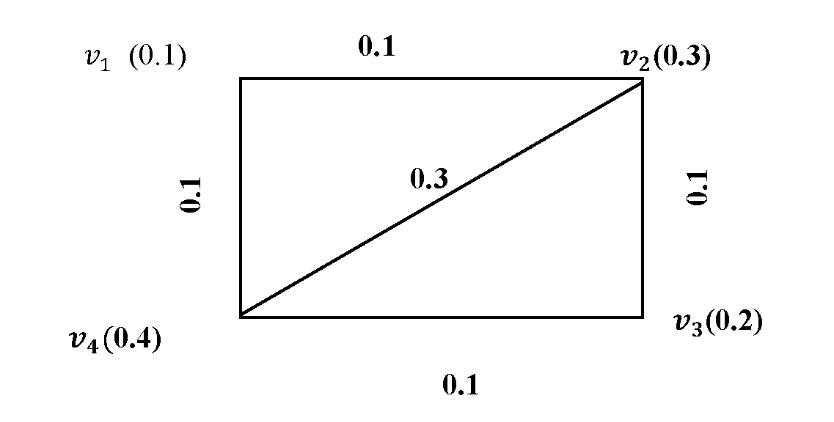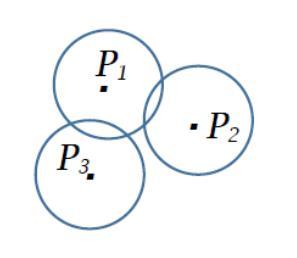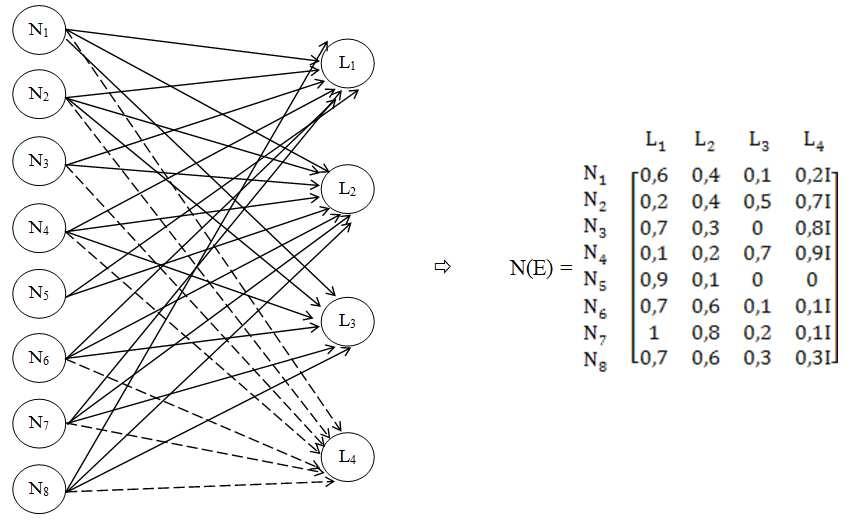
9 minute read
Neutrosophic Quantum Computer
Florentin Smarandache
Florentin Smarandache (2016). Neutrosophic Quantum Computer. Intern. J. Fuzzy Mathematical Archive 10(2): 139-145
Advertisement
Abstract. This paper is a theoretical approach for a potential neutrosophic quantum computer to be built in the future, which is an extension of the classical theoretical quantum computer, into which the indeterminacy is inserted. Keywords: neutrobit, indeterminacy, neutrosophic quantum, neutrosophic polarization, neutrosophic particle, entangled neutrosophic particles, neutrosophic superposition, neutrosophic dynamic system, neutrosophic Turing machine, neutrosophic quantum functions
1. Introduction
Neutrosophic quantum communication is facilitated by the neutrosophic polarization, that favors the use the neutrosophic superposition and neutrosophic entanglement. The neutrosophic superposition can be linear or non-linear. While into the classical presumptive quantum computers there are employed only the coherent superpositions of two states (0 and 1), in the neutrosophic quantum computers one supposes the possibilities of using coherent superpositions amongst three states (0, 1, and I = indeterminacy) and one explores the possibility of using the decoherent superpositions as well.
2. Neutrosophic polarization
The neutrosophic polarization of a photon is referred to as orientation of the oscillation of the photon: oscillation in one direction is interpreted as 0, oscillation in opposite direction is interpreted as 1, while the ambiguous or unknown or vague or fluctuating back and forth direction as I (indeterminate). Thus, the neutrosophic polarization of a photon is 0, 1, or I. Since indeterminacy (I) does exist independently from 0 and 1, we cannot use fuzzy nor intuitionistic fuzzy logic / set, but neutrosophic logic / set. These three neutrosophic values are used for neutrosophically encoding the
data.
3. Refined neutrosophic polarization
In a more detailed development, one may consider the refined neutrosophic polarization, where we refine for example I as I1 (ambiguous direction), I2(unknown direction), I3(fluctuating direction), etc.
Or we may refine 0 as 01(oscillation in one direction at a high angular speed), 02 (oscillation in the same direction at a lower angular speed), etc. Or we may refine 1 as 11 (oscillation in opposite direction at a high angular speed), 12(oscillation in the same opposite direction at a lower angular speed), etc. The refinement of the neutrosophic polarization may be given by one or more parameters that influence the oscillation of the photon.
4. Neutrosophic quantum computer
A Neutrosophic Quantum Computer uses phenomena of Neutrosophic Quantum Mechanics, such as neutrosophic superposition and neutrosophic entanglement for neutrosophic data operations.
5. Neutrosophic particle
A particle is considered neutrosophic if it has some indeterminacy with respect to at least one of its attributes (direction of spinning, speed, charge, etc.).
6. Entangled neutrosophic particle
Two neutrosophic particles are entangled if measuring the indeterminacy of one of them, the other one will automatically have the same indeterminacy.
7. Neutrosophic data
Neutrosophic Data is data with some indeterminacy.
8. Nutrosophic superposition
Neutrosophic Superposition, that we introduce now for the first time, means superpositions only of 0 and 1 as in qubit (=quantum bit), but also involving indeterminacy (I), as in neutrosophic set, neutrosophic logic, neutrosophic probability, neutrosophic measure, and so on.
9. Indeterminate bit
An indeterminate bit, that we introduce now for the first time, is a bit that one does not know if it is 0 or 1, so we note it by I (= indeterminacy). Therefore, neutrosophic superposition means coherent superposition of 0 and I, 1 and I, or 0 and 1 and I: 0 , 1 ,or 0 1 , ordecoherent superposition of classical bits 0 and 1, or decoherence between 0, 1, I, such as:
0 1 , 0 , 1 , 0 1
10. Neutrobit
A neutrosophic bit (or “neutrobit”), that we also introduce for the first time, is any of the above neutrosophicsuperpositions:
0 , 1
0 , 1
,or 0 1 A neutrobit acts in two or three universes. A neutrobit can exist with, of course, a (t, i, f)neutrosophic probability, simultaneously as 0 and I, or 1 and I, or 0, 1, and I, where t = percentage of truth, i = percentage of indeterminacy, and f = percentage of falsehood.
11. Refined neutrosophic quantum computer
Thus, we extend the neutrosophic quantum computers to refined neutrosophic quantum computers.
12. Neutrosophic filter polarization
The neutrosophic filter polarization of the receiver must match the neutrosophic polarization of the transmitter, of course.
13. Neutrosophic quantum parallelism
The neutosophicquantum parallelism is referring to the simultaneously calculations done in each universe, but some universe may contain indeterminate bits, or there might be some decoherencesuperpositions.
14. n-Neutrobit quantum computer
Thus, an n-neutrobit quantum computer, whose register has nneutrobits, requires 3n- 1 numbers created from the digits 0, 1, and I (where I is considered as an indeterminate digit).
A register of n classical bits represents any number from 0 to 2n-1. A register of n qubits such that each bit is in superposition or coherent state, can represent simultaneously all numbers from 0 to 2n-1. Being in neutrosophic superposition, a neutrosophic quantum computer can simultaneously act on all its possible states.
15. Neutrosophic quantum gates
Moving towards neutrosophic quantum gates involves experiments in which one observes quantum phenomena with indeterminacy.
16. Remarks
Building a Neutrosophic Quantum Computer requires a neutrosophic technology that enables the “neutrobits”, either with coherent superpositions involving I, or with decoherent superpositions. Since neither classical quantum computers have been built yet, neutrosophic quantum computers would be as today even more difficult to construct. But we are optimistic that they will gather momentum in practice one time in the future.
The reversibility of a neutrosophic quantum computer is more problematic than that of a classical quantum computer, since amongst its neutrosophic inputs that must be entirely deducible from its neutrosophic outputs, there exists I (indeterminacy).
This becomes even more complex when one deals with refined neutrosophic polarisations, such as sub-indeterminacies (I1, I2) and sub-oscillations in one direction, or in another direction. A loss of neutrosophic information (i.e. information with indeterminacy) results from irreversible neutrosophic quantum computers (when its inputs are not entirely deducible from its outputs). The loss of information, which comes from the loss of heat of the photons, means loss of bits, or qubits, or neutrobits.
18. Neutrosophic dynamical system
Any classical dynamical system is, in some degree neutrosophic, since any dynamical system has some indeterminacy because a dynamic system is interconnected with its environment, hence interconnected with other dynamical systems. We can, in general, take any neutrosophic dynamical system, as a neutrosophic quantum computer, and its dynamicity as a neutrosophic computation.
19. Neutrosophic Turing machine and neutrosophic Church-Turing principle
We may talk about a Neutrosophic Turing Machine, which is a Turing Machine which works approximately (hence it has some indeterminacy), and about a Neutrosophic Church-Turing Principle, which deviates and extends the classical Church-Turing Principle to: “There exists or can be built a universal 'neutrosophic quantum' [NB: our inserted words] that can be programmed to perform any computational task that can be performed by any physical object.”
20. Human brain as an example of neutrosophic quantum computer
As a particular case, the human brain is a neutrosophic quantum computer (the neutrosophic hardware), since it works with indeterminacy, vagueness, unknown, incomplete and conflicting information from our-world. And because it processes simultaneously information in conscience and sub-conscience (hence netrosophic parallelism). The human mind is neutrosophic software, since works with approximations and indeterminacy.
21. Neutrosophic quantum dot
In the classical theoretical quantum computers, a quantum dot is represented by one electron contained into a cage of atoms. The electron at the ground state is considered the 0 state of the classical qubit, while the electron at the excited (that is caused by a laser light pulse of a precise duration and wavelength) is considered the 1 state of the classical qubit.
When the laser light pulse that excites the electron is only half of the precise duration, the electron gets in a classical superposition of 0 and 1 states simultaneously. A right duration-and-wavelength laser light pulse knocks the electron from 0 to 1, or from 1 to 0. But, when the laser light pulse is only a fraction of the right duration, then the electron is placed in between the ground state (0) and the excited state (1), i.e. the electron is placed in indeterminate state (I). We denote the indeterminate state by “I”, as in neeutrosophic logic, and of course ∈ 0, 1 in this case.
For indeterminacy, 0, = , and 1, = 1. If = 0.2, then 0, 0.2 = 0.2, and 1, 0.2 = 0.2.
25. Neutrosophic IFTHEN function.
The neutrosophic function is defined as: : 0, 1 × 0, 1 → 0, 1 . x, y = 1 − , , for all , ∈ 0, 1 . is equivalent to , , similar to the Boolean logic: → is equivalent to or . Therefore: 0, 0 = 1, 1, 1 = 1, 1, 0 = 0, 0, 1 = 1. Its neutrosophic value table is:
x
0 Iα
y
0 1 1- Iα
Iβ
1- Iβ
1
0
Iα 1 max{1- Iα, Iα} max{1- Iβ, Iα} Iα
Iβ 1 max{1- Iα, Iβ} max{1- Iβ, Iβ} Iβ
1 1 1 1 1
where , are indeterminacies and they belong to 0, 1 . , can be crisp numbers, interval-valued, or in general subsets of [0, 1].
26. Neutrosophic quantum liquids
In classical theoretical quantum computers, there also are used computing liquids. In order to store the information, one employs a soup of complex molecules, i.e. molecules with many nuclei. If a molecule is sunk into a magnetic field, each of its nuclei spins either downward (which means state 0), or upward (which means state 1). Precise radio waves bursts change the nuclei spinning from 0 to 1, and reciprocally. If the radio waves are not at a right amplitude, length and frequency, then the nuclei state is perturbed (which means neither 0nor 1, but I = indeterminacy). Similarly, this is a neutrosophication process. These spin states (0, 1, or I) can be detected with the techniques of NNMR (Neutrosophic Nuclear Magnetic Resonance).
The deneutrosophication means getting rid of indeterminacy (noise), or at least diminish it as much as possible.
27. Conclusion
This is a theoretical approach and investigation about the possibility of building a quantum computer based on neutrosophic logic. Future investigation in this direction is required. As next research it would be the possibility of extending the Quantum Biocomputer to a potential Neutrosophic Quantum Biocomputer, by taking into consideration the inherent indeterminacy occurring at the microbiological universe.
REFERENCES
1. Peter P. Gariaev, Peter J. Marcer, Katherine A’ Leonova-Gariaeva, Uwe Kaempf, Valeriy D. Artjukh, DNA as Basis for Quantum Biocomputer, DNA Decipher Journal, Vol. 1, Issue 1, January 2011, pp. 025-046. 2. Michael A. Nielsen and Isaac L. Chuang: Quantum Computation and Quantum Information: 10th Anniversary Edition, Cambridge University Press, 2011. 3. Eleanor G. Rieffel and Wolfgang H. Polak: Quantum Computing: A Gentle Introduction (Scientific and Engineering Computation), The MIT Press, 2014. 4. F.Smarandache,n-Valued Refined Neutrosophic Logic and Its Applications in Physics, Progress in Physics, 4 (2013) 143-146. http://fs.gallup.unm.edu/n-ValuedNeutrosophicLogic-PiP.pdf. 5. F. Smarandache, Symbolic Neutrosophic Logic, Europa Nova, Bruxelles, 194 p., 2015; in UNM website: http://fs.gallup.unm.edu/SymbolicNeutrosophicTheory.pdf.







